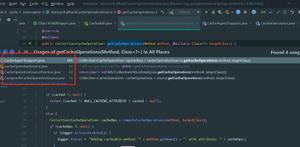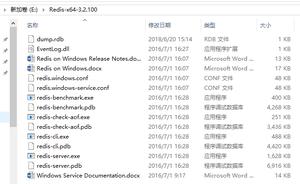spring学习五:Spring Bean 定义继承
本文内容纲要:
- Bean 定义继承- 例子
- Bean 定义模板
Bean 定义继承
bean 定义可以包含很多的配置信息,包括构造函数的参数,属性值,容器的具体信息例如初始化方法,静态工厂方法名,等等。
子 bean 的定义继承父定义的配置数据。子定义可以根据需要重写一些值,或者添加其他值。
Spring Bean 定义的继承与 Java 类的继承无关,但是继承的概念是一样的。你可以定义一个父 bean 的定义作为模板和其他子 bean 就可以从父 bean 中继承所需的配置。
当你使用基于 XML 的配置元数据时,通过使用父属性,指定父 bean 作为该属性的值来表明子 bean 的定义。
例子
我们在适当的位置使用 Eclipse IDE,然后按照下面的步骤来创建一个 Spring 应用程序:
| 步骤 | 描述 |
|---|---|
| 1 | 创建一个名称为 SpringExample 的项目,并且在创建项目的 src 文件夹中创建一个包 com.tutorialspoint。 |
| 2 | 使用 Add External JARs 选项,添加所需的 Spring 库,解释见 Spring Hello World Example 章节。 |
| 3 | 在 com.tutorialspoint 包中创建 Java 类 HelloWorld、HelloIndia 和 MainApp。 |
| 4 | 在 src 文件夹中创建 Beans 配置文件 Beans.xml。 |
| 5 | 最后一步是创建的所有 Java 文件和 Bean 配置文件的内容,并运行应用程序,解释如下所示。 |
下面是配置文件 Beans.xml,在该配置文件中我们定义有两个属性 message1 和 message2 的 “helloWorld” bean。然后,使用 parent 属性把 “helloIndia” bean 定义为 “helloWorld” bean 的孩子。这个子 bean 继承 message2 的属性,重写 message1 的属性,并且引入一个属性 message3。
<?xml version="1.0" encoding="UTF-8"?><beans xmlns="http://www.springframework.org/schema/beans"
xmlns:xsi="http://www.w3.org/2001/XMLSchema-instance"
xsi:schemaLocation="http://www.springframework.org/schema/beans
http://www.springframework.org/schema/beans/spring-beans-3.0.xsd">
<bean id="helloWorld" class="com.tutorialspoint.HelloWorld">
<property name="message1" value="Hello World!"/>
<property name="message2" value="Hello Second World!"/>
</bean>
<bean id="helloIndia" class="com.tutorialspoint.HelloIndia" parent="helloWorld">
<property name="message1" value="Hello India!"/>
<property name="message3" value="Namaste India!"/>
</bean>
</beans>
这里是 HelloWorld.java 文件的内容:
package com.tutorialspoint;public class HelloWorld {
private String message1;
private String message2;
public void setMessage1(String message){
this.message1 = message;
}
public void setMessage2(String message){
this.message2 = message;
}
public void getMessage1(){
System.out.println("World Message1 : " + message1);
}
public void getMessage2(){
System.out.println("World Message2 : " + message2);
}
}
这里是 HelloIndia.java 文件的内容:
package com.tutorialspoint;
public class HelloIndia {
private String message1;
private String message2;
private String message3;
public void setMessage1(String message){
this.message1 = message;
}
public void setMessage2(String message){
this.message2 = message;
}
public void setMessage3(String message){
this.message3 = message;
}
public void getMessage1(){
System.out.println("India Message1 : " + message1);
}
public void getMessage2(){
System.out.println("India Message2 : " + message2);
}
public void getMessage3(){
System.out.println("India Message3 : " + message3);
}
}
下面是 MainApp.java 文件的内容:
package com.tutorialspoint;
import org.springframework.context.ApplicationContext;
import org.springframework.context.support.ClassPathXmlApplicationContext;
public class MainApp {
public static void main(String[] args) {
ApplicationContext context = new ClassPathXmlApplicationContext("Beans.xml");
HelloWorld objA = (HelloWorld) context.getBean("helloWorld");
objA.getMessage1();
objA.getMessage2();
HelloIndia objB = (HelloIndia) context.getBean("helloIndia");
objB.getMessage1();
objB.getMessage2();
objB.getMessage3();
}
}
一旦你创建源代码和 bean 配置文件完成后,我们就可以运行该应用程序。如果你的应用程序一切都正常,将输出以下信息:
World Message1 : Hello World!World Message2 : Hello Second World!
India Message1 : Hello India!
India Message2 : Hello Second World!
India Message3 : Namaste India!
在这里你可以观察到,我们创建 “helloIndia” bean 的同时并没有传递 message2,但是由于 Bean 定义的继承,所以它传递了 message2。
Bean 定义模板
你可以创建一个 Bean 定义模板,不需要花太多功夫它就可以被其他子 bean 定义使用。在定义一个 Bean 定义模板时,你不应该指定类的属性,而应该指定带 true 值的抽象属性,如下所示:
<?xml version="1.0" encoding="UTF-8"?><beans xmlns="http://www.springframework.org/schema/beans"
xmlns:xsi="http://www.w3.org/2001/XMLSchema-instance"
xsi:schemaLocation="http://www.springframework.org/schema/beans
http://www.springframework.org/schema/beans/spring-beans-3.0.xsd">
<bean id="beanTeamplate" abstract="true">
<property name="message1" value="Hello World!"/>
<property name="message2" value="Hello Second World!"/>
<property name="message3" value="Namaste India!"/>
</bean>
<bean id="helloIndia" class="com.tutorialspoint.HelloIndia" parent="beanTeamplate">
<property name="message1" value="Hello India!"/>
<property name="message3" value="Namaste India!"/>
</bean>
</beans>
父 bean 自身不能被实例化,因为它是不完整的,而且它也被明确地标记为抽象的。当一个定义是抽象的,它仅仅作为一个纯粹的模板 bean 定义来使用的,充当子定义的父定义使用。
本文内容总结:Bean 定义继承,例子,Bean 定义模板,
原文链接:https://www.cnblogs.com/guanbin-529/p/13568967.html
以上是 spring学习五:Spring Bean 定义继承 的全部内容, 来源链接: utcz.com/z/362558.html







